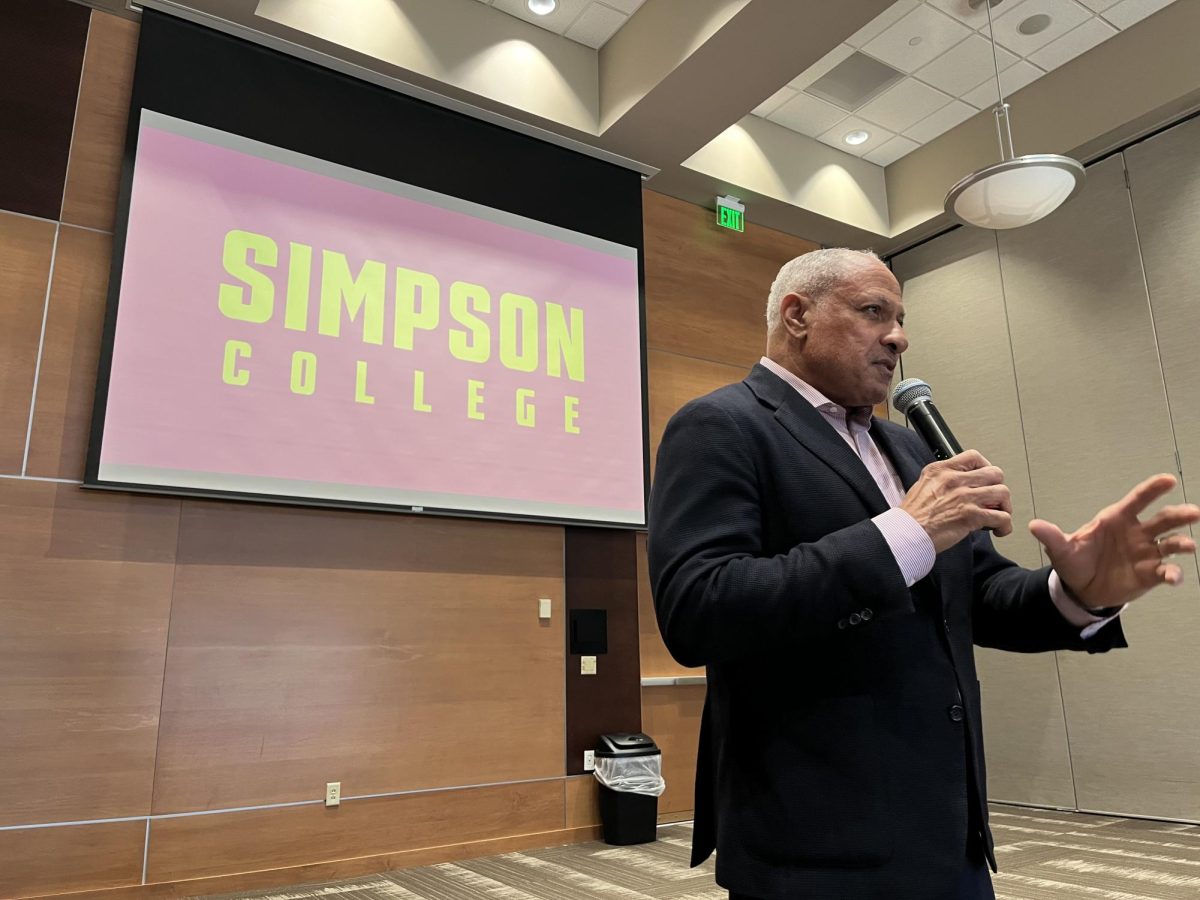Letter to the editor: Graffiti as Locally Enacted Material Protest
September 9, 2020
Editorial note: This article has no interest in implicating a Simpson community member in the graffiti on Irving Elementary School. It also condemns the practice of making accusations toward students, faculty, or staff because they are persons of color or BLM supporters. However, it does seek to explain why some community members might be sympathetic with the graffiti and to explain what might motivate someone to engage in graffiti of its type.
Making graffiti is an ancient practice used for both commemoration and political commentary. The unification of politics with memorializing the dead should not surprise us: deaths are often a catalyst for those who challenge the social order. All the more so, when that social order has permitted, or even sought, the deaths of individuals or groups within itself. In ancient sacred spaces, the spontaneous inscription of the names of the dead may have been a reminder to name them within liturgical practices (themselves politically charged), and such inscriptions certainly evoked their presence among the living in the midst of worship activities.
While graffiti is often disparaged, spontaneous memorials are common in the American context along roadsides where accidents have occurred. The desire to make a public memorial, to make grief public and visible, overrides our formation into the invisible social boundaries of public property. As scholars Jennifer Clark and Majella Franzmann have described, creators of roadside memorials assume the authority to do so, and ground that authority in “the overwhelming empowerment of grief; the belief that the presence of the deceased can be felt and recognized; and the understanding that the place where life was lost is a special place for memorialization.” Nevertheless, this authority is often challenged by municipal governments who allow some but not all crash memorials as legitimate uses of public space. Some are repeatedly removed (only to be replaced over night).
Graffiti not only memorializes, but also claims space or contests “territory.” The most commonly discussed aspect of urban graffiti in U.S. media discourse is “tagging”: the use of graffiti to mark the territory of an individual or gang seeking to establish their place in a hierarchy with others who share a limited public landscape. This identity landscape is simultaneously the physical territory and the psychic acknowledgement or renown. Graffiti tags want to claim your attention, to speak where uninvited, exerting agency against socio-political norms constructed and maintained by both government and civil society.
In “Revolution is the New Black: Graffiti/Art and Mark-making Practices” Ursula Frederick writes, “Graffiti, as a mark of arrival, is a particularly symbolic action when considered in light of historical circumstances of exploration, colonization, war, migration and settlement.” Consider the graffiti at the border wall with Mexico. One artist has painted an upside-down U.S. flag with the label “lies” and all the stars replaced with white crosses memorializing those who have died trying to make the crossing into the United States. This illicit art is not painted on the wall because it is an available blank wall space. Rather, the location of the memorial and protest matters, it signifies a testimony to the inhumanity of U.S. treatment of migrants and refugees.
Far from being “anti-social behavior,” graffiti often seeks to evoke the unrealized hope of transforming society: a society where all the living are included and where all the dead are deemed worth remembering. Around the world museums hold sections of the Berlin Wall which separated East and West Germany during the forty years that East Germany was governed as part of the Soviet Union. The graffiti on these chunks of concrete were rejections of the psychic distress caused by political division and occupation of the city.
Graffiti as a medium of political communication is stigmatized because it is not only outside the forms of political participation which change the political apparatus “from within,” but because it embodies a rejection of other forms of social control. In particular, graffiti violates norms of private property and “civil” speech (as graffiti often uses visual or verbal profanity). However, this norm-violation is a part of the political message of graffiti protestors. The choice to take political action which is broadly construed as “illegitimate” originates in the belief by protestors that they are excluded from the political process, that the political process will not bring about change, and/or that the political institutions themselves are invalid or illegitimate. This is why while some street art or graffiti is put up in legal locations or is preserved due to its beautifying effects, this has the impact of reducing its impact as a form of political protest: increasing graffiti’s legitimacy undermines its effectiveness. It must be civilly disobedient, it must arrest the eye, for the full political meaning and affective outrage to register.
BLM protesting in particular is located within this last idea of challenging the legitimacy or livability of existing political institutions: enacting the counter hegemonic. BLM protestors argue that the institutions are not only permitting but are themselves part of the causal apparatus perpetuating an assault on Black Lives through policing, mass incarceration, and extrajudicial violence. No more deaths unmourned, no more waiting for human rights. This makes traditional forms of advocacy, incorporated into the political system, inadequate to reckon with the need for public mourning and outrage at the loss of Black life. In this register, BLM, ACAB, and other tags are a form of resistance to oppression. Their location on school property could reference the unequal disciplining of children of color, the school-to-prison pipeline, the State-level insistence on an open economy amidst pandemic at the expense of the most marginalized (especially Indigenous and Black Americans), or the frustrations of youth denied their full voice in social and political discourse.
When governance is unjust, not merely through negligence, but also through active harm, then resistance to government and public order cannot take “governable” forms. As a recent popular youtube video with Kimberley Jones found here https://www.youtube.com/watch?v=llci8MVh8J4 noted, in such instances the social contract is broken, and the pretense that it remains in effect only perpetuates the further victimization of marginalized people in order to regulate benefits from harms done, rather than addressing past and present harms and the slow reconstruction of broken trust.




